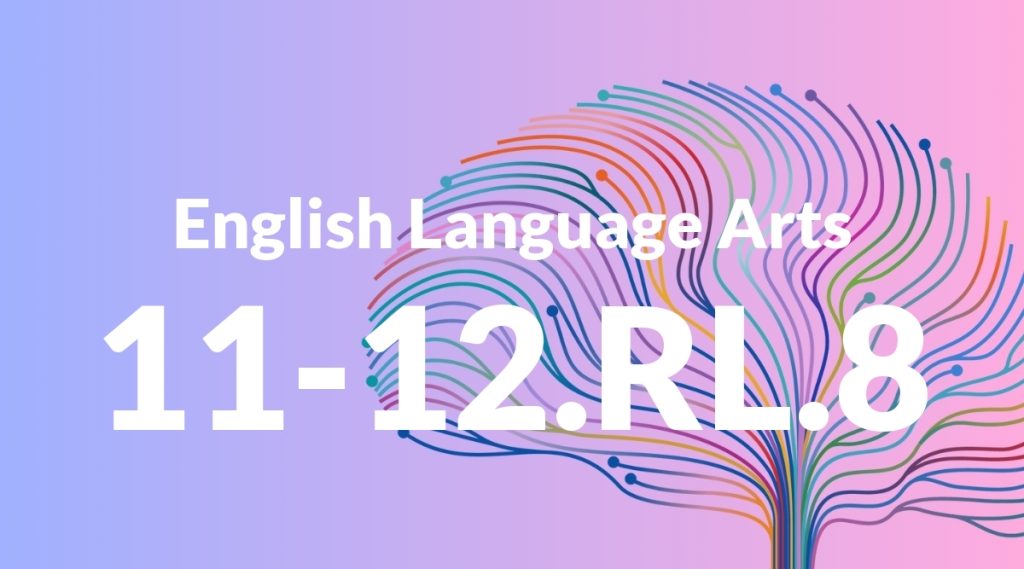Standard: 11-12.RL.8 – (RL.11-12.8 not applicable to literature)
Grade level: Grade 11-12
Subject: English Language Arts
Domain: Reading: Literature
Teacher Overview
This standard emphasizes the importance of analyzing literature through a critical lens. Understanding how to break down and interpret literary texts is crucial for developing advanced reading and analytical skills. This standard is pivotal in preparing students for the complexities of college-level literature courses. Students should be familiar with basic literary elements and devices, and have some experience in text analysis. They should also have a foundational understanding of how historical context can influence literature.
Mastering this standard will enable students to perform more sophisticated literary analyses, understand complex themes and motifs, and draw connections between different literary works. This will prepare them for higher-level literature courses and enhance their critical thinking skills.
Common Misconception 1
A common misconception is that literary analysis is purely subjective. Students may believe that there are no right or wrong answers, which can lead to a lack of structure in their analysis.
Intervention 1
Introduce a structured approach to literary analysis, including clear steps and examples. Encourage students to use textual evidence to support their interpretations.
Common Misconception 2
Another common misconception is that historical context is irrelevant to understanding literature. Students may not see the connection between the time period in which a work was written and its themes, characters, and plot.
Intervention 2
Provide historical background information before reading a text and discuss how this context influences the story. Use specific examples to illustrate the impact of historical events on literature.
Prerequisite Knowledge
Students should have a solid understanding of basic literary elements such as theme, plot, character, and setting. They should also be familiar with various literary devices and have experience in analyzing texts from different genres.
Subsequent Knowledge
After mastering this standard, students will be able to engage in more sophisticated literary analysis, including understanding complex themes and motifs, and making connections between different literary works. They will also be better prepared for college-level literature courses.
Instructional Activities
- Group discussions on themes and motifs in literature
- Writing essays that analyze the impact of historical context on a novel
- Creating presentations on the use of literary devices in a play
- Conducting peer reviews of literary analysis papers




